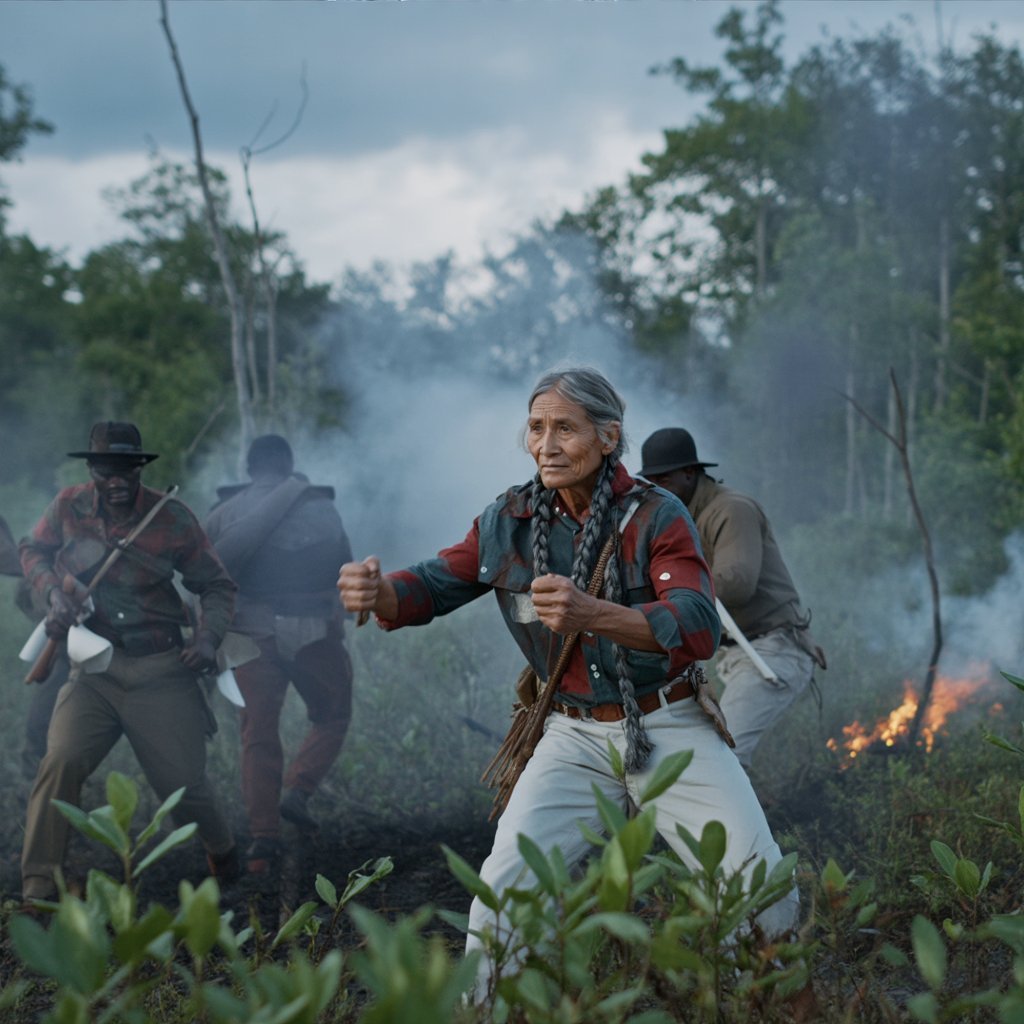Forging Freedom: How the Seminole and Black Seminole Alliance Resisted the US Army
The history of the Seminole people and the Black Seminoles of Florida is a powerful testament to the fight for freedom against overwhelming odds. Faced with the encroaching power of the United States and the threat of forced relocation or re-enslavement, this unique alliance of Native Americans and African Americans waged a series of wars that would become one of the most fierce and prolonged conflicts in American history. Their success in resisting a much larger military force was not a matter of luck, but a result of their strategic genius, deep knowledge of the land, and a shared, unyielding commitment to liberty.
A Unique Alliance Born of Necessity
The origins of the Seminole-Black Seminole alliance trace back to the 18th century. As European settlers pushed Native American tribes south, a new group, the Seminoles, formed from a mix of various Creek people and other Native American groups. At the same time, escaped slaves from plantations in Georgia and the Carolinas, often called maroons, sought refuge in the relative freedom of Spanish-controlled Florida. These two groups, bonded by their shared experience of oppression and their common enemy, formed a symbiotic relationship.
The Seminoles offered protection and land, while the Black Seminoles, many of whom had knowledge of European-American culture and language, served as interpreters and diplomats. They lived in their own independent villages, paid a tribute to the Seminoles in the form of crops, and intermarried, forging a new culture. This close relationship and the existence of a free, armed Black community in Florida was seen as a grave threat by Southern slaveholders, who feared it would incite further slave rebellions and escapes. The U.S. government, driven by the desire for Florida’s rich land and the imperative to protect the institution of slavery, saw the Seminole-Black Seminole alliance as a major obstacle. This tension would ultimately ignite the First and Second Seminole Wars.
Guerrilla Warfare: The Florida Swamps as an Ally
The primary tactic that allowed the Seminoles and Black Seminoles to hold off the U.S. Army was guerrilla warfare. While the American forces were a large, well-equipped, and professionally trained army, they were ill-suited for the environment of the Florida Everglades—a vast, hostile, and unfamiliar landscape of swamps, thick forests, and a network of hidden trails.
The Seminoles and their Black allies used this terrain to their immense advantage. They conducted surprise attacks, ambushed troops from concealed positions, and then disappeared into the swamps, leaving the U.S. soldiers disoriented and demoralized. Unlike the U.S. Army, the Seminoles didn’t fight to hold territory; their goal was to inflict casualties and frustrate the enemy until they gave up. They would attack military supply lines, raid plantations, and force the army into a costly, drawn-out conflict. This strategy was incredibly effective, as it made the war a financial and human resources drain for the U.S. government.
Leadership and Unwavering Motivation
The resistance was fueled by the charismatic and unyielding leadership of figures on both sides of the alliance. On the Seminole side, leaders like Osceola became a symbol of defiance. He famously plunged his knife into a treaty document, declaring his refusal to abandon his people’s land. The Black Seminoles also produced formidable leaders, such as John Horse (also known as Gopher John), a brilliant warrior and diplomat who played a crucial role in negotiating with the U.S. and keeping the alliance together.
What truly set the Black Seminoles apart was their motivation. They were not just fighting for land, but for their very lives and the lives of their families. For them, surrender meant a return to slavery—a fate they would fight to the death to avoid. This uncompromising ferocity was noted by U.S. military commanders, including General Thomas S. Jesup, who stated that he found the “Negroes the most active and determined warriors.” This desperate will to remain free made them uncompromising and fierce fighters, often taking the lead in battles and inspiring their Seminole counterparts.
Deception, Diplomacy, and Strategic Alliances
The Seminoles and Black Seminoles also used diplomacy and even deception to their advantage. They would meet with U.S. officials under a flag of truce to buy time, gather intelligence, and secure resources. In a particularly infamous act of treachery, the U.S. Army captured Osceola during a parley under a flag of truce. However, instead of breaking the Seminole spirit, this act of betrayal only hardened their resolve.
Black Seminole leaders, with their understanding of the white world, were instrumental in these interactions. They served as key interpreters and were often more savvy to the duplicitous nature of the U.S. government’s negotiations. They also actively recruited other enslaved people from nearby plantations, promising them freedom and a safe haven in exchange for joining their fight. This not only bolstered their ranks but also created a constant state of fear and instability for the slave-owning South.
The Legacy of Resilience
While the Seminole Wars eventually led to the forced removal of most of the Seminole and Black Seminole population to Indian Territory (modern-day Oklahoma), a small number of Seminoles managed to evade capture and remain in the swamps of Florida, where their descendants live today. The Black Seminoles who were relocated faced renewed challenges, but they continued their struggle for freedom, even migrating to Mexico in search of a place where they would truly be free from slavery.
The story of the Seminole-Black Seminole alliance is more than a tale of war; it’s a profound narrative of resistance, cooperation, and the enduring human spirit. It’s a powerful reminder that when people unite with a shared purpose—in this case, the pursuit of freedom—they can defy even the most powerful of adversaries. They left behind a legacy of resilience that continues to inspire.
